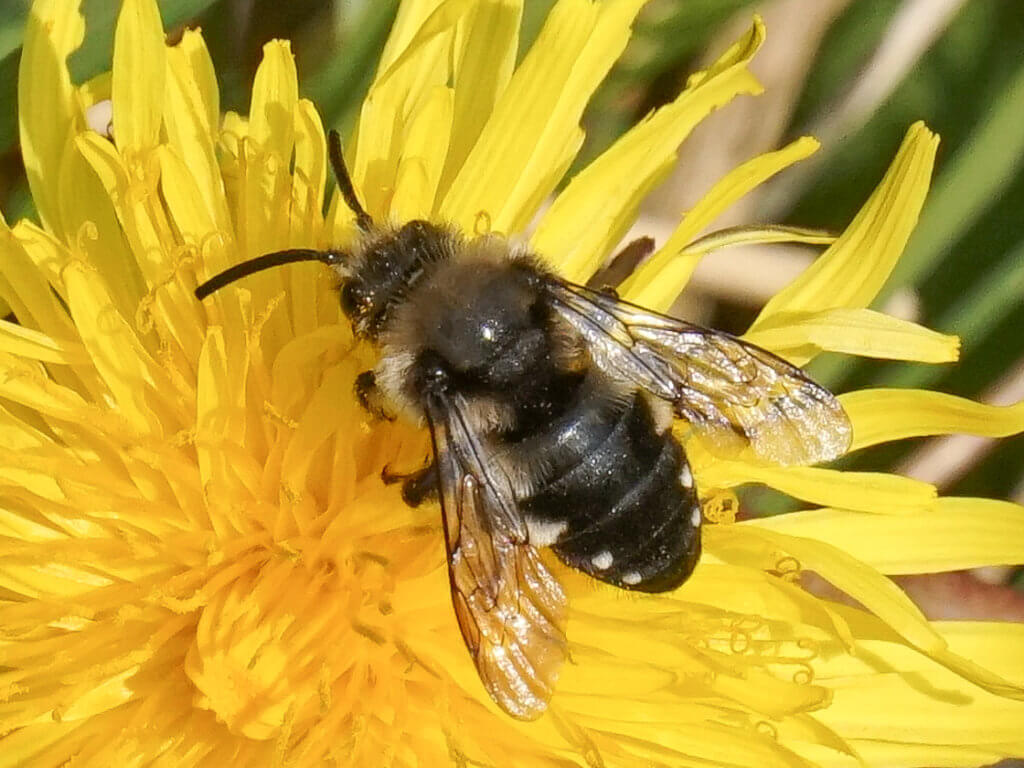
Paul writes: I found this bee on 18 April among the gravestones at my local church in Hunmanby, which seemed quite appropriate. The Mourning Bee (Melecta albifrons) is a solitary bee and a cleptoparasite of one of our most popular bees, the Hairy-footed Flower Bee (Anthophora plumipes). The female makes a hole in the sealed up cell of the host species, inserts an egg, then reseals the cell. Once hatched the Mourning Bee larva eats the larva of its host and then, as it grows, feeds on the stored food in the cell. It will then emerge as an adult the following spring.
I have found Mourning Bees in my local colony of Hairy-footed Flower Bees for the past couple of years so have been keeping my eyes open recently, hoping that they are still there. This one was very obliging and even landed to feed on a dandelion, one of my favourite insect attracting flowers. Both bees appear in early spring, the Flower Bee a few weeks before the Mourning Bee. It’s mainly a species of England south of the Humber but there are a few records, including my own, north of this. I think it is under-recorded as its host species has been seen as far north as Edinburgh. It’s very easy to recognise, with its black body and white spots. So if you see Hairy-footed Flower Bees whizzing around and chasing each other amongst a spring flower bed look out for a slightly larger black bee quietly flying around hoping to find out where their nest is.
[registration_form]
Until now Paul, I did not know that the author of your posts, which I read regularly with great interest, lives in Hunmanby.
In the mid-seventies my parents retired there and are buried in God’s Acre.
Kind regards,
John Beal